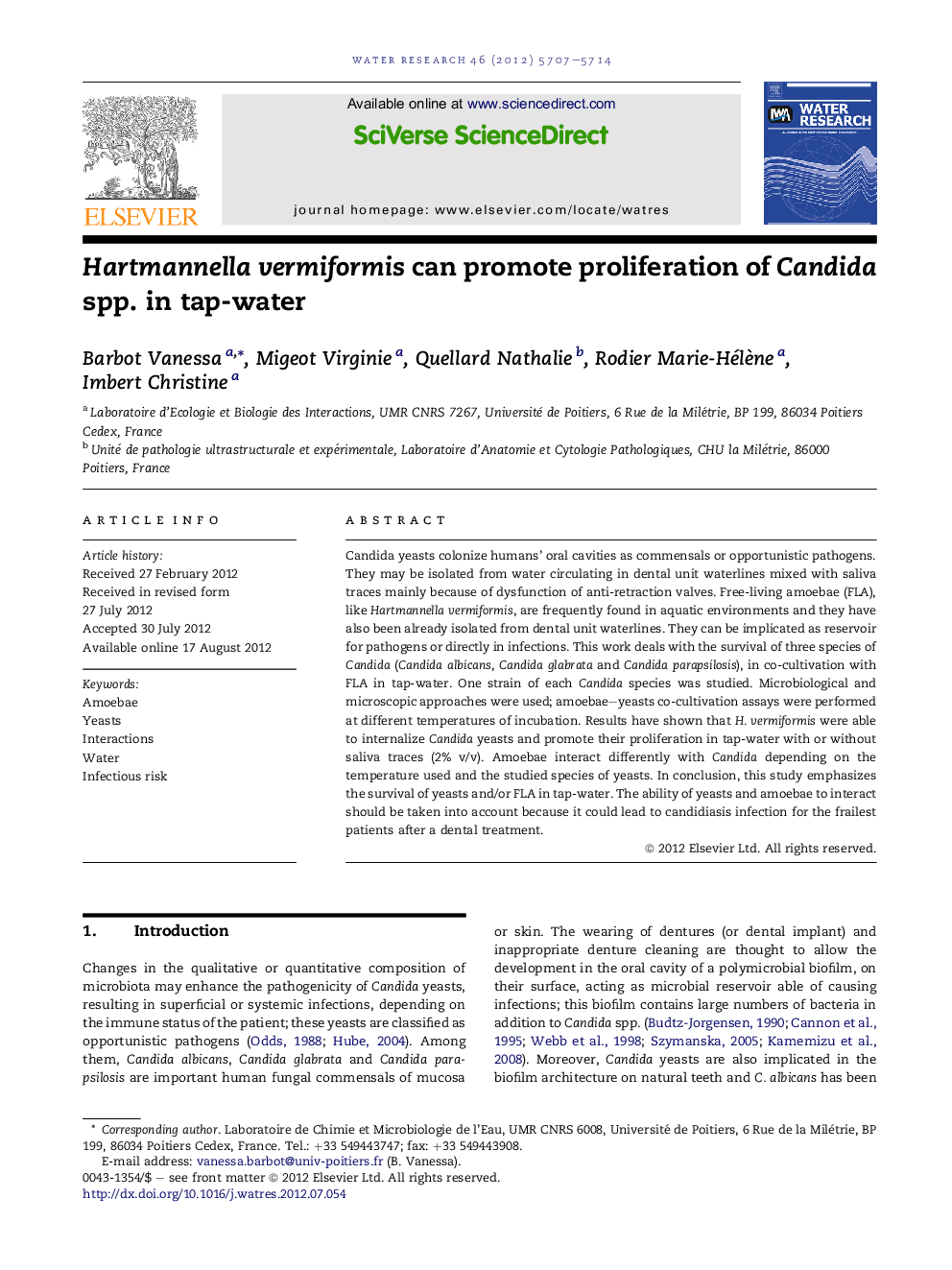| Article ID | Journal | Published Year | Pages | File Type |
|---|---|---|---|---|
| 4482608 | Water Research | 2012 | 8 Pages |
Candida yeasts colonize humans' oral cavities as commensals or opportunistic pathogens. They may be isolated from water circulating in dental unit waterlines mixed with saliva traces mainly because of dysfunction of anti-retraction valves. Free-living amoebae (FLA), like Hartmannella vermiformis, are frequently found in aquatic environments and they have also been already isolated from dental unit waterlines. They can be implicated as reservoir for pathogens or directly in infections. This work deals with the survival of three species of Candida (Candida albicans, Candida glabrata and Candida parapsilosis), in co-cultivation with FLA in tap-water. One strain of each Candida species was studied. Microbiological and microscopic approaches were used; amoebae–yeasts co-cultivation assays were performed at different temperatures of incubation. Results have shown that H. vermiformis were able to internalize Candida yeasts and promote their proliferation in tap-water with or without saliva traces (2% v/v). Amoebae interact differently with Candida depending on the temperature used and the studied species of yeasts. In conclusion, this study emphasizes the survival of yeasts and/or FLA in tap-water. The ability of yeasts and amoebae to interact should be taken into account because it could lead to candidiasis infection for the frailest patients after a dental treatment.
Graphical abstractFigure optionsDownload full-size imageDownload high-quality image (161 K)Download as PowerPoint slideHighlights► Candida spp. can survive in tap-water. ► Hartmannella vermiformis can interact with Candida spp. in tap-water. ► Hartmannella vermiformis can increase survival of Candida spp. in tap-water. ► Amoebae combined with Candida spp. in dental unit water may represent a health risk.
